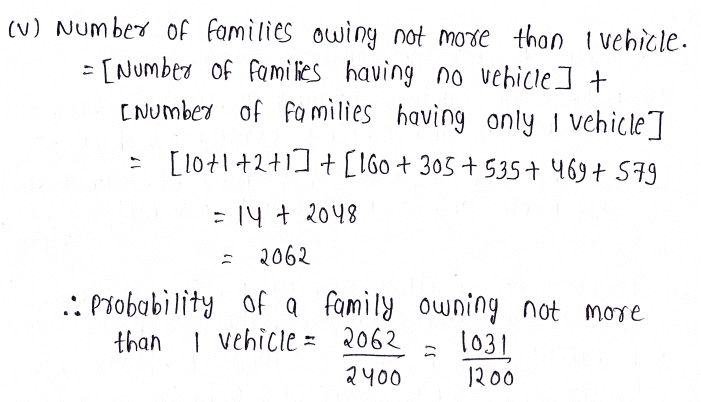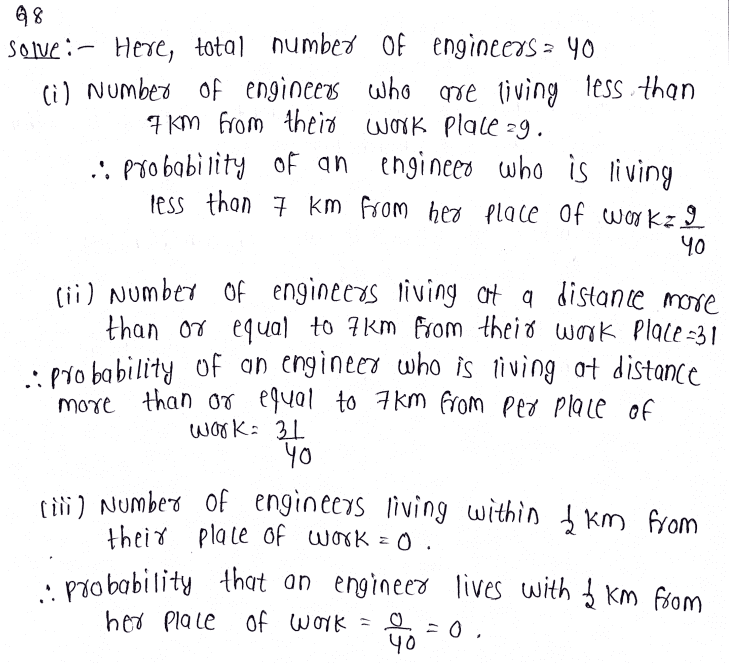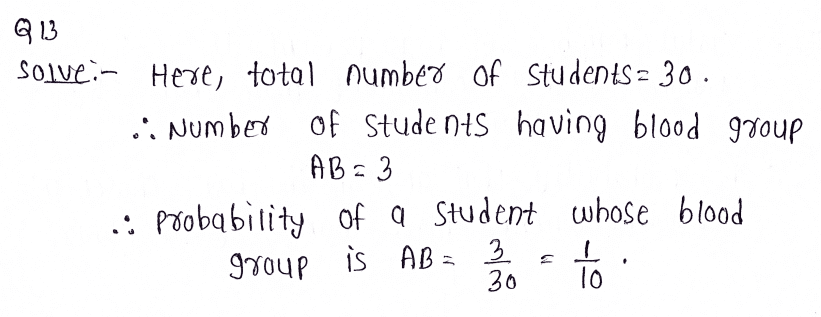In this post, we have discussed the solution of the Maths class 9 Chapter 15 Probability which is followed in all CBSE schools. Solutions are given below with proper Explanation and utmost care has been taken to ensure that the solutions are correct. The answers provided will not only help in completing all the assignments but also help students in clearing their concepts. Students can download the solutions by printing the chapters by using the command Ctrl+P in google chrome and saving it in PDF format. All the best !! Please support us by sharing this website with your school friends.
Exercise 15.1 Class 9 Maths Chapter 15 Statistics Solutions
Get here solutions of Maths class 9 Exercise 15.1 handwritten solutions.
1. In a cricket match, a batswoman hits a boundary 6 times out of 30 balls she plays. Find the probability that she did not hit a boundary.

2. 1500 families with 2 children were selected randomly, and the following data were recorded:

Compute the probability of a family, chosen at random, having
(i) 2 girls (ii) 1 girl (iii) No girl
Also check whether the sum of these probabilities is 1.

3. Refer to Example 5, Section 14.4, Chapter 14. Find the probability that a student of the class was born in August.

4. Three coins are tossed simultaneously 200 times with the following frequencies of different outcomes:

If the three coins are simultaneously tossed again, compute the probability of 2 heads coming up.

5. An organisation selected 2400 families at random and surveyed them to determine a relationship between income level and the number of vehicles in a family. The information gathered is listed in the table below:

(i) earning ₹10000 – ₹13000 per month and owning exactly 2 vehicles.
(ii) earning ₹16000 or more per month and owning exactly 1 vehicle. (iii) earning less than 7000 per month and does not own any vehicle.
(iv) earning ₹13000 – ₹16000 per month and owning more than 2 vehicles.
(v) owning not more than 1 vehicle.


6. Refer to Table 14.7, Chapter 14.
(i) Find the probability that a student obtained less than 20% in the mathematics test.
(ii) Find the probability that a student obtained marks 60 or above.

7. To know the opinion of the students about the subject statistics, a survey of 200 students was conducted. The data is recorded in the following table

Find the probability that a student chosen at random
(i) likes statistics, (ii) does not like it.

8. Refer to Q.2, Exercise 14.2. What is the empirical probability that an engineer lives:
(i) less than 7 km from her place of work?
(ii) more than or equal to 7 km from her place of work?
(iii) within 1/2 km from her place of work?

9. Activity: Note the frequency of two-wheelers, three-wheelers and four-wheelers going past during a time interval, in front of your school gate. Find the probability that any one vehicle out of the total vehicles you have observed is a two-wheeler.

10. Activity: Ask all the students in your class to write a 3-digit number. Choose any student from the room at random. What is the probability that the number written by her/him is divisible by 3? Remember that a number is divisible by 3, if the sum of its digits is divisible by 3.

11. Eleven bags of wheat flour, each marked 5 kg, actually contained the following weights of flour (in kg):
4.97 5.05 5.08 5.03 5.00 5.06 5.08 4.98 5.04 5.07 5.00
Find the probability that any of these bags chosen at random contains more than 5 kg of flour.

12. In Q.5, Exercise 14.2, you were asked to prepare a frequency distribution table, regarding the concentration of sulphur dioxide in the air in parts per million of a certain city for 30 days. Using this table, find the probability of the concentration of sulphur dioxide in the interval 0.12 – 0.16 on any of these days.

13. In Q.1, Exercise 14.2, you were asked to prepare a frequency distribution table regarding the blood groups of 30 students of a class. Use this table to determine the probability that a student of this class, selected at random, has blood group AB.
